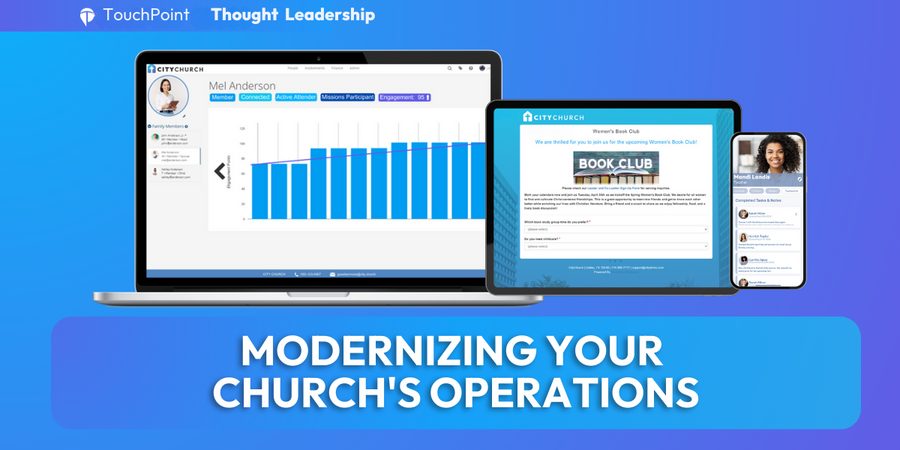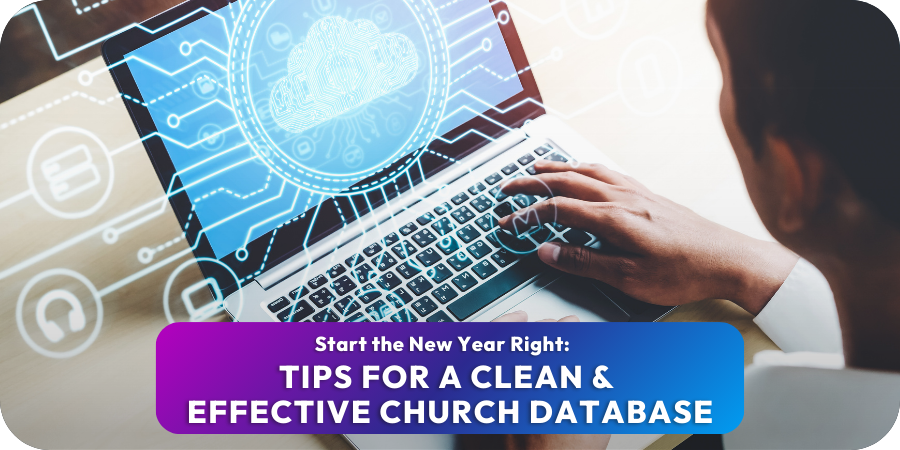What Kind Of Decision-Maker Are You?
Do you lead with your gut or lean on the data? In ministry, it’s easy to base decisions on personal experiences, intuition, or the loudest voice in the room. While feelings have their place, they don’t always tell the whole story. With the right tools, churches today have access to meaningful data that can reveal patterns, uncover needs, and guide ministries with clarity. When you pair Spirit-led wisdom with actionable insights, you position your church to make better, more intentional decisions that truly serve your people. Let’s explore how data-driven discipleship can strengthen your mission and ministry.
Track Engagement And Discipleship Journeys
Data gives churches a powerful lens into how people are moving along their spiritual journey. By tracking engagement (attendance at worship services, small groups, etc.) church leaders can identify trends in participation and proactively reach out to individuals who may be drifting. This also helps pastors and ministry leaders monitor key milestones such as baptisms, volunteer involvement, or class completion, allowing for more intentional discipleship planning. When you can see who is involved and how deeply, you’re better equipped to shepherd your congregation with wisdom and care.
Guide Resource Allocation
Understanding how your people engage allows you to make smarter decisions about where to invest time, energy, and budget. Data can highlight which ministries are thriving and which may need reimagining. For example, if a specific ministry consistently sees high participation and spiritual growth, it may warrant additional support. Conversely, if a program consistently shows low engagement, leadership can reevaluate its structure or timing. Giving patterns also offer valuable forecasting insights, helping churches plan financially for both everyday ministry and larger initiatives.

Improve Volunteer Recruitment And Retention
Volunteers are the backbone of any ministry, and data makes it easier to manage and care for them well. By tracking who is serving, how often, and in what areas, churches can prevent burnout and identify individuals ready for new opportunities. Historical data helps match people with roles that align with their spiritual gifts, passions, and past experiences. With better visibility into volunteer dynamics, churches can create healthier serving cultures and stronger ministry teams.
Personalize Pastoral Care And Outreach
One of the most powerful uses of data is making care more personal. With the right insights, churches can identify people who haven’t attended recently, families going through transition, or individuals who might benefit from additional spiritual support. Communication can be segmented by age, ministry involvement, or life stage to ensure it’s relevant and timely. When life events are logged in the system—such as births, deaths, or marriages—pastors and lay leaders can respond with the right kind of care at just the right moment.
Enhance Communication Strategies
Clear, targeted communication keeps people connected, and data helps refine how and when messages are delivered. By analyzing open rates, click-throughs, and engagement patterns, churches can see which emails, texts, or app notifications are resonating. They can then adjust messaging based on what different groups respond to—whether that’s new members, young families, or longtime volunteers. Segmenting communication helps ensure the right message reaches the right person through the right channel, strengthening connection and response.

Support Strategic Planning
Strategic decisions are more effective when they’re based on facts, not assumptions. With year-over-year data trends in attendance, giving, group involvement, and program participation, church leaders can evaluate the success of past initiatives and plan for future impact. Whether you’re launching a new discipleship path, evaluating building use, or staffing a new ministry, data helps you forecast and set measurable, mission-aligned goals. It removes the guesswork and empowers churches to lead with clarity and confidence.
Create More Relevant Programs For The People In The Pews
When churches lean on data rather than anecdotal stories or assumptions, they uncover what their congregation truly needs. For example, if attendance is trending younger, programs for young families may need to expand. If job loss is becoming more common in your community, consider launching job readiness workshops. Your church management software can reveal patterns that help you design ministries that meet people where they are. The more tailored your programming, the more likely people will engage and grow spiritually.
Keep People Engaged Between Sundays
Ministry doesn’t stop when Sunday service ends, and data helps you stay connected throughout the week. By monitoring attendance and giving patterns, your system can identify when someone begins to disengage and alert leaders to reach out. For example, if a person hasn’t attended in two weeks or their giving pattern shifts, automated notifications can prompt timely follow-up. This kind of proactive engagement can help prevent people from falling through the cracks. Equipping leaders with this insight fosters a culture of care that extends beyond Sunday mornings.

Drive Greater Commitment And Generosity
Data offers unique insights into generosity that can help grow both giving and engagement. For instance, research shows that people typically need to give five times before becoming regular donors. By tracking and walking with people through those first gifts, churches can nurture consistency. Additionally, meeting regularly with your top givers to share how their generosity impacts ministry can deepen their commitment. When donors see the spiritual return on their investment—especially when it aligns with their personal passions—they often become even more enthusiastic supporters.
Measure Progress Toward Your Mission, Vision, And Values
Churches often craft mission and values statements, but data ensures those statements move beyond posters on a wall. When churches track key activities that align with their values—like worship, prayer, fellowship, and outreach—they can measure actual progress. For instance, if your church values intimate worship, worship service attendance becomes a key metric. If you emphasize discipleship, small group participation and volunteer involvement become signs of alignment. Data creates accountability and helps ministry leaders evaluate if their efforts are truly supporting the church’s mission.
Move From Insight to Action
Meaningful ministry decisions start with clarity—and clarity begins with the right tools and conversations. If your church is ready to turn data into direction, here’s how to take the next step.
Here’s How to Strengthen Your Church Communication
Clarity starts with the right conversation.
1. Schedule a Demo
Let us know what matters most to your team and how you want to improve communication across your ministry.
2. Explore the Tools Together
Meet with a church technology expert who understands what it takes to lead well. Get a focused walkthrough of the features that support real connection.
3. Lead With Clarity
Move forward with a system designed to simplify your communication, engage your people, and support your mission.
Make Communication Clear.
Get the clarity your team needs to serve your church well.













